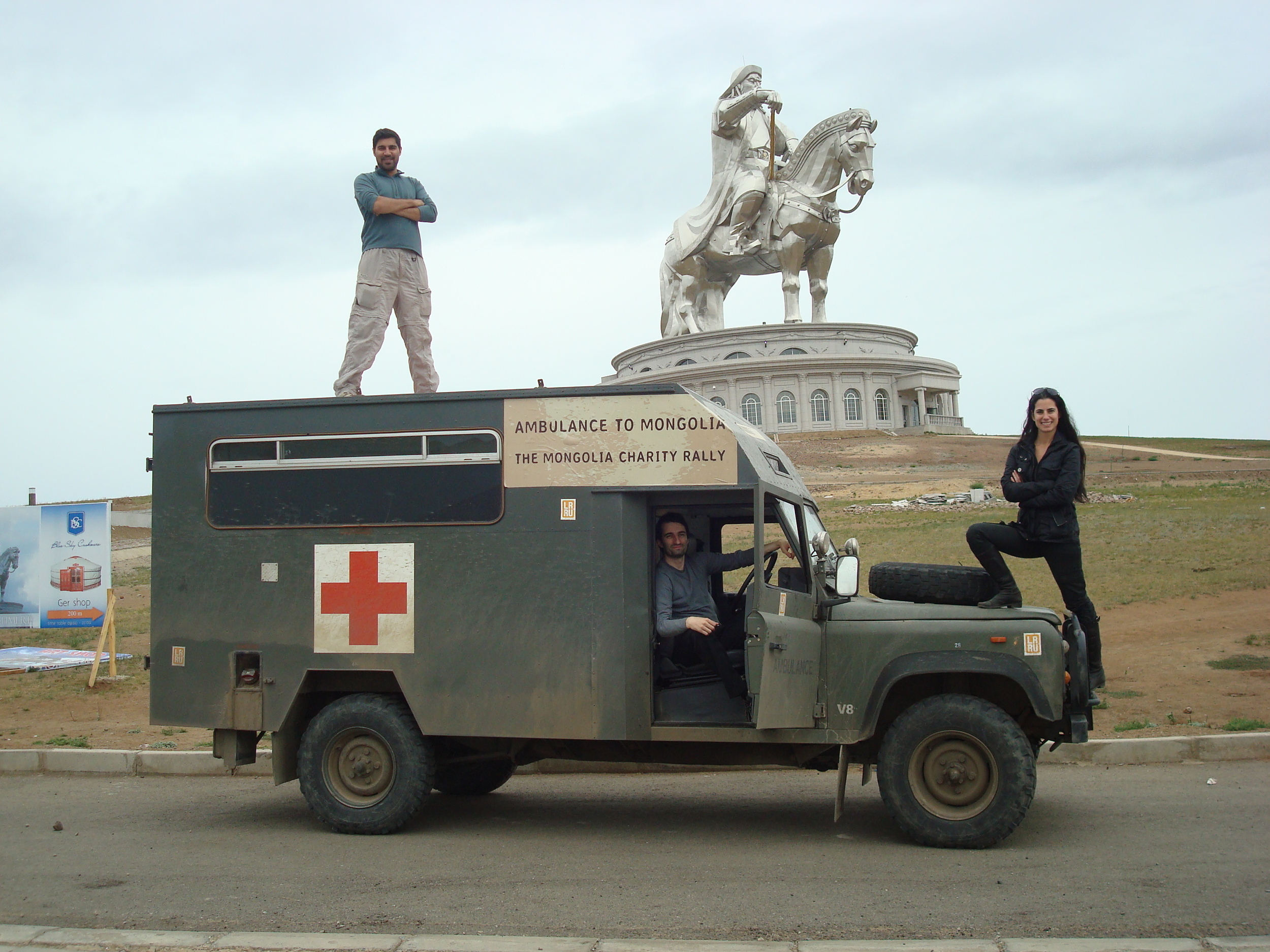From London to Mongolia…In an Ambulance
The Washington Note |
By Parag Khanna
Ulanbaatar, Mongolia - At last year's TED Global conference, I presented a series of "invisible maps" showing how the world's borders and gravities of influence are constantly shifting, often without us noticing.
One slide depicted China's sly encroachment on Mongolia's rich natural resources, leading me to dub the country "Mine-Golia." This caused quite a stir here in Ulanbataar, where I've just arrived after completing the 8000 mile Mongolia Charity Rally.
My team (including a Russian-American private equity investor, a professional female rally driver, and a DC-based public relations consultant) and I began in London in early July, getting behind the wheel of 1991 Land Rover Defender 137 which had been converted by the British Army into an ambulance.
We quickly dubbed her "Betsy," and after some false starts and break-downs en route to the Chunnel, we arrived in Calais (France) and hauled across Western Europe. Polish and Russian mechanics work faster, cheaper, and better than their "Old Europe" counterparts, and we took full advantage as Betsy's fuel filter and ignition switches needed replacement. Meanwhile, our quick stops for sleep and media appearances allowed us to soak in Warsaw and Moscow, which pulse with energy amidst late summer sunsets.
Anyone who has driven across Turkey knows that the "real" or "other" Turkey begins east of Istanbul and Ankara. As I wrote in The Second World, the same is true for Russia.
Heading south from Moscow, we stopped at Kazan, site of Europe's second largest mosque (behind Istanbul's Blue Mosque). During the past decade's oil boom, Tatar provincial authorities cleverly negotiated retaining a greater share of extractive sector profits, turning this once "third capital" of Russia into a mini Muslim Moscow. Even as Moscow vacillates between tightening its grip on governors versus allowing them free reign, Moscow itself seems peripheral as one enters the periphery.
Tatarstan's maneuvers are emblematic of psychological trends outside the core Slavic Russia of the country's northwest region. The Caucasus territories have delivered nothing but trouble to Moscow since independence, especially Chechnya and Dagestan. Moving eastward across the Ural mountains into Asian Russia provides the ultimate geographic reminder of the diffuseness and fragility of Russia's grip on its "other" self. Americans need to be reminded that Russia has ten time zones--that's 2.5 times more than the U.S.
It takes about two weeks at an average speed to cross Russia, but you have to fight for almost every mile on sometimes head-splittingly bumpy, unpaved roads. It costs Russia a great deal to maintain its gargantuan size, an investment Russia has made little priority of since the collapse of the Soviet Union. Putin and Medvedev waffle on domestic investment, while the finance ministry is tight with the purse strings. Meanwhile, the final 2000 kilometers to Russia's easternmost outpost of Vladivostok is barely passable--yet China lies so close.
After the steel town of Cheryablinsk and former nuclear science center of Novosibirsk, Siberia (north and northeast of the vast border to Kazakhstan) presented an endlessly enchanting vista of wheat fields and forests. We encountered ever more Altai and Buryat peoples, whose identity--like that of the now independent Kazakhs, Uzbeks, and other nations of Central Asia--was largely ignored by Sovietologists. The further east one goes, the more one finds right-side steering wheel cars (like ours) bought surplus from Japan and cheaper flight options to China than to Moscow--both a metaphor for Siberia's amorphous identity.
After a couple of days respite in Irkutsk and Baikal, the world's largest and deepest freshwater lake and a uniquely diverse eco-system, we headed south to the Mongolian border. Mongolia is precariously wedged between Russia and China, historically "Finlandized" by the former and increasingly so by the latter, for whom it is a captive supplier of iron ore, copper, and other metals. In a lecture here and in meetings with senior officials, I've emphasized that Western diplomats and bankers should support the Mongolian government and firms to negotiate more favorable deals and set-up futures funds to manage mineral wealth, all important ingredients to maintaining and strengthening Mongolia's sovereignty.
You too can help countries with small populations and high potential like Mongolia. Our "Ambulance to Mongolia" team blog has our trip diary and more information about the Mongolian medical system, and donations can be made on our team site.
